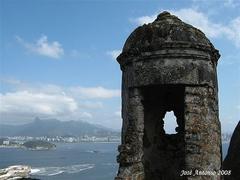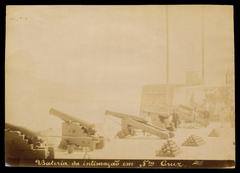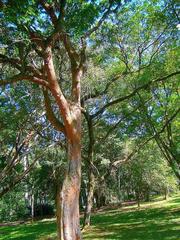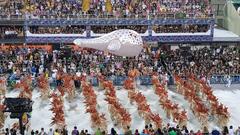Estádio Caio Martins: Visiting Hours, Tickets, and Guide to Niterói’s Historic Sporting Landmark
Date: 04/07/2025
Introduction
Estádio Caio Martins, set in the picturesque Icaraí neighborhood of Niterói, Brazil, is far more than a sports stadium—it is a living emblem of the city’s football passion, community resilience, and historical memory. Since opening its doors in 1941, the stadium has played a central role in Niterói’s urban and cultural landscape, reflecting moments of both local celebration and national reflection. This guide offers comprehensive information about visiting Estádio Caio Martins, including practical details, historical context, and tips for exploring nearby Niterói attractions (História do Futebol; Wikipedia).
Table of Contents
- Introduction
- Stadium Origins and Historical Significance
- Architecture and Facilities
- Sporting Legacy
- The Stadium in Brazil’s Political History
- Practical Visitor Information
- Community Role and Urban Redevelopment
- Frequently Asked Questions (FAQ)
- Visual Gallery
- Related Articles
- External Resources
- Conclusion & Key Takeaways
- References
Stadium Origins and Historical Significance
Estádio Caio Martins was inaugurated on July 20, 1941, on the grounds of a former dog racing track, with the aim of hosting Campeonato Carioca football matches in Niterói, then the capital of the old state of Rio de Janeiro. The stadium’s name honors Caio Vianna Martins, a 15-year-old scout remembered for his altruism and heroism. Since its founding, the site has been home to both major football clubs and local sports groups, serving as a testament to Niterói’s enduring commitment to sports and community development (Wikipedia).
Architecture and Facilities
Originally praised for its modernist design, Estádio Caio Martins features covered stands, accessible facilities, and modern locker rooms. Its current spectator capacity is approximately 12,000. The stadium is part of the larger Complexo Esportivo Caio Martins, which also offers a gymnasium and swimming pool, emphasizing its multifunctional role as a community sports center (Dicas de Niterói).
Sporting Legacy
Football Heritage
The stadium’s inaugural match in 1941 saw Canto do Rio face Vasco da Gama. Over the decades, Estádio Caio Martins has hosted both amateur and professional matches, including fixtures for Botafogo and, periodically, Flamengo when Maracanã was unavailable. Local clubs including Canto do Rio and Niterói Futebol Clube have also played here, enriching the region’s football culture. The affectionate nickname “Mestre Ziza” honors Brazilian football legend Zizinho (Wikipedia).
Major Events and Community Use
Through the 1960s and 1970s, the stadium regularly drew crowds of over 10,000 for major matches (Novos Rumos, 1962). It has also hosted athletics, swimming, volleyball, and civic events, underlining its centrality in local life (Dicas de Niterói).
The Stadium in Brazil’s Political History
In 1964, amidst Brazil’s military dictatorship, Estádio Caio Martins was temporarily repurposed as a detention center for political prisoners—a somber chapter that marks it as a site of collective memory. Survivor testimonies and official reports estimate that hundreds were imprisoned here. Contemporary redevelopment plans include integrating a public memorial to honor those affected by this period, reaffirming the stadium’s importance as a historical landmark (Ludopédio; UFF Geographia; O Globo).
Practical Visitor Information
Hours and Access
- Opening Hours: Typically open daily from 8:00 AM to 6:00 PM. Event days may affect these hours; verify before visiting (Dicas de Niterói).
- Location: Rua Presidente Backer, 299, Icaraí, Niterói, RJ, CEP 24220-041 (Google Maps).
Tickets
- Community Events & Amateur Matches: Usually free admission.
- Professional Matches & Special Events: Tickets range from R$30 to R$120, with discounts for students, seniors, and members as per the Lei da Meia-Entrada.
- Where to Buy:
- Botafogo Official
- Ingresso Rápido
- Stadium box office on event days
Accessibility
- Ramps and accessible seating are available in compliance with the Lei Brasileira de Inclusão.
- Restrooms and basic facilities are accessible, though some limitations exist due to the stadium’s age. Contact ahead for specific needs.
Directions
- Bus: Accessible from main terminals in Niterói and Rio de Janeiro (Niterói Bus Info).
- Ferry: CCR Barcas connects Rio and Niterói; continue via taxi or bus.
- Taxi/Ride-Sharing: Uber and 99 operate widely in the area.
- Parking: Limited street parking; private lots within a 10-minute walk (R$20–R$40/day).
Amenities and Nearby Attractions
- Food & Beverage: Event days feature kiosks with snacks and soft drinks. Alcohol is not sold inside (Estatuto do Torcedor).
- Restrooms: Located behind main stands.
- Merchandise: Available during matches and at club stores.
- Nearby Sights:
- Praia de Icaraí (500m)
- Museu de Arte Contemporânea de Niterói (2.5km, designed by Oscar Niemeyer) (MAC Niterói)
- Caminho Niemeyer
Tours and Events
- Guided Tours: No regular tours, but special events or community groups may organize historical visits.
- Photography: Personal use allowed; professional equipment requires authorization. Drones prohibited without a permit.
Community Role and Urban Redevelopment
Estádio Caio Martins continues to serve as a hub for community sports, supporting thousands of local students in disciplines ranging from football to capoeira (Enfoco).
Ongoing urban development plans include:
- Flood Mitigation: Construction of an underground reservoir beneath the field to alleviate local flooding (O Globo).
- Public Park and Memorial: Future plans envision new sports courts, leisure spaces, and a memorial to victims of the dictatorship (A Tribuna RJ).
- Preservation: Community and government stakeholders are actively engaged in preserving the stadium’s historical structures while adapting to modern needs.
Frequently Asked Questions (FAQ)
Q: What are the visiting hours for Estádio Caio Martins?
A: Typically open from 8:00 AM to 6:00 PM; confirm in advance, especially on event days.
Q: How do I buy tickets?
A: Purchase online via Botafogo Official, Ingresso Rápido, or at the stadium box office on event days.
Q: Is the stadium wheelchair accessible?
A: Yes, with ramps and reserved seating, but contact ahead for detailed accessibility needs.
Q: What attractions are nearby?
A: Praia de Icaraí, Museu de Arte Contemporânea de Niterói (MAC), Caminho Niemeyer, and local dining.
Q: Are tours available?
A: No regular tours, but check with local cultural groups or the city’s tourism office for special opportunities.
Q: Is parking available?
A: Limited street parking and nearby private lots; public transport is recommended on event days.
Visual Gallery
Insert high-quality images with captions such as “Estádio Caio Martins entrance in Niterói,” “Historic football match at Caio Martins,” and “View of Icaraí neighborhood from the stands.”
Interactive maps and virtual tours are available via the Official Niterói Tourism Website.
Related Articles
External Resources
- História do Futebol
- Wikipedia
- Ludopédio
- UFF Geographia
- Dicas de Niterói
- SpingRV
- O Globo
- A Tribuna RJ
- Enfoco
- Botafogo Official
- Official Niterói Tourism Website
- MAC Niterói
- Google Maps
Conclusion & Key Takeaways
Estádio Caio Martins remains a vital part of Niterói’s heritage—a space where sporting history, civic life, and memory intersect. Whether attending a match, exploring its layered past, or enjoying the surrounding cultural attractions, visitors will discover a site woven into the fabric of the city. Ongoing redevelopment projects, including flood mitigation and the creation of a public memorial, underscore the community’s commitment to honoring the past while building for the future.
Travel Tips:
- Always verify hours and ticketing in advance, especially during periods of renovation or special events.
- Utilize public transport for convenience.
- Explore nearby sites for a fuller Niterói experience.
Stay informed on stadium updates and city events by downloading the Audiala app and following official Niterói tourism channels. Your visit to Estádio Caio Martins is not just a step into a football venue, but an invitation to witness—and participate in—Niterói’s living history.



